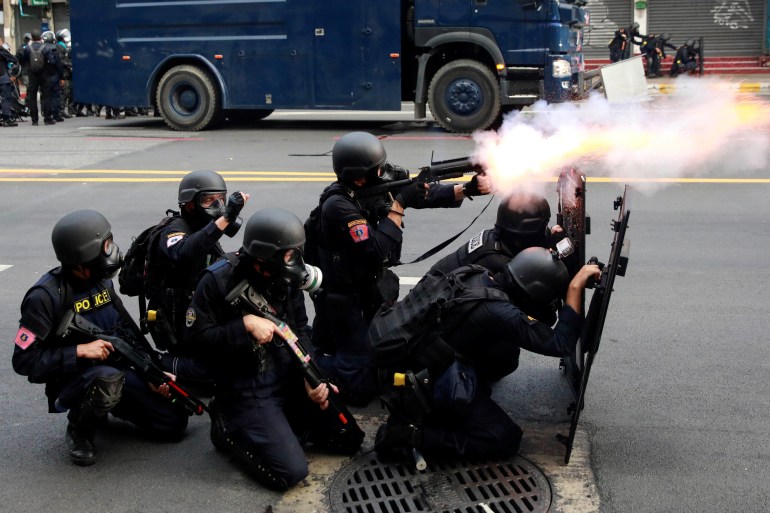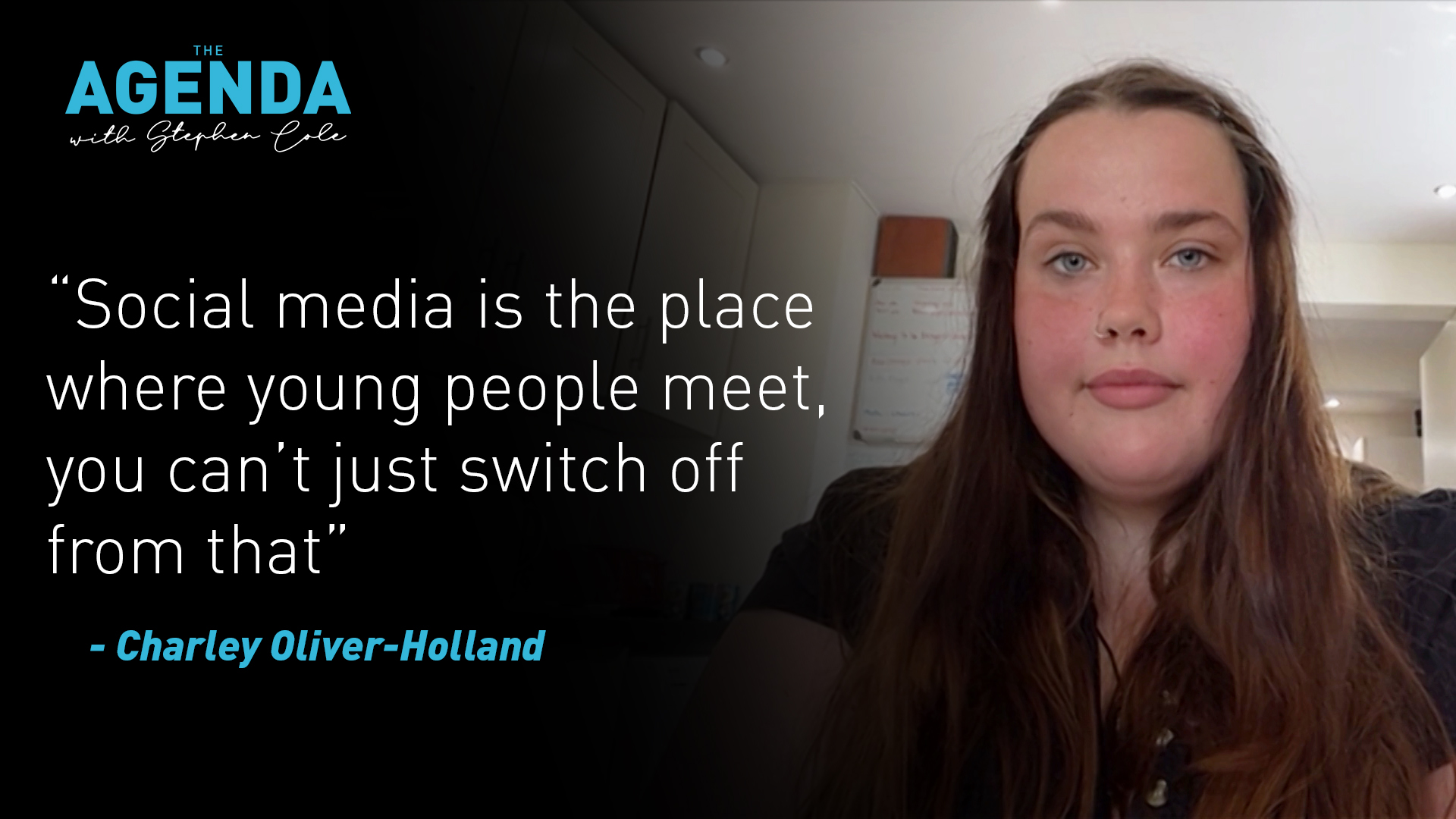Anti-gov’t protesters rally in the Thai capital against the state’s failure to handle COVID outbreaks and the economy.

7 Aug 2021
Thailand police have fired tear gas and rubber bullets at demonstrators in Bangkok protesting against the government’s failure to handle coronavirus outbreaks and its effect on the economy.
More than 1,000 protesters defied restrictions on public gatherings on Saturday and marched towards Government House, the office of Prime Minister Prayuth Chan-ocha, demanding his resignation.
Police sealed off a road near Victory Monument using containers and shot tear gas and rubber bullets to push protesters back.
“We are holding this line,” police announced over a loudspeaker.
About 100 officers were seen in riot gear and shields metres away from where demonstrators had gathered.
Street protests against the government have been held in recent weeks by several groups, including Prayuth’s former political allies, as frustrations mount over its management of coronavirus outbreaks and the damage pandemic measures have inflicted on the economy.
Franc Han Shih, a journalist based in Bangkok, told Al Jazeera that Saturday’s protest was partly triggered by the Thai government’s sluggish rollout of its COVID vaccination programme
“The wrong vaccination policy really irritated citizens in Thailand,” said Shih, who added that the government had made a deal for 10 million doses of the AstraZeneca jab, but had only received half so far.
“Although China provided more than 6 million doses of Sinovac, it isn’t enough,” he added

On Saturday, Thailand reported a record of nearly 22,000 new reported COVID-19 cases and the highest number of daily deaths – 212.
Overall, it has reported 736,522 cases of the coronavirus, including 6,066 deaths, since the pandemic began last year.
“I’m worried about the situation but we will have to continue fighting despite the severe COVID outbreak,” 27-year-old protester Nat, who only gave one name, told AFP news agency.
A youth-led street protest movement for democracy rose up last year and at its peak drew tens of thousands to rallies in Bangkok.
The demonstrators called for the resignation of Prayuth, the former army chief who came to power in a 2014 coup, as well as changes to the military-scripted constitution and calls for changes to the monarchy.
2021/8/7
©Reuters

By Jiraporn Kuhakan and Chayut Setboonsarng
BANGKOK (Reuters) -More than a thousand Thai anti-government protesters clashed with police on Saturday, as they demonstrated against the government's failure to handle coronavirus outbreaks and its impact on the economy.
About a hundred police officers in riot gear sealed off a road near Victory Monument in the capital Bangkok with containers and used water cannon, tear gas and rubber bullets to stop a march toward Government House, the office of Prime Minister Prayuth Chan-ocha.
"Tear gas and rubber bullets were used for crowd control. Our goal is to maintain order," Krisana Pattanacharoen, a police spokesman, told reporters.
The demonstrators threw ping pong bombs, stones and marbles, he added.
Dozens of protesters were seen being carried away on motorcycles and in ambulances. The Erawan Emergency Medical Centre said at least two civilians and three officers had been injured.
"We want Prayuth to resign because people aren't getting vaccines," said a 23-year-old male protester, who only gave his first name "Aom", for fear of repercussions.
"We don't have jobs and income, so we have no choice but protest."
Some 6% of Thailand's population of more than 66 million has been fully vaccinated and most of the country including Bangkok is under lockdown with a night-time curfew. Gatherings of more than five people are currently banned.
Nonetheless, street protests against the government have been held in recent weeks by several groups, including Prayuth's former political allies, as frustrations mount over its management of the health crisis.
Thailand reported on Saturday a record of nearly 22,000 new COVID-19 infections in a single day and the highest deaths, 212 fatalities.
The Southeast Asian country has reported 736,522 total cases and 6,066 deaths from the coronavirus since the pandemic began last year.
(Additional reporting by Panarat Thepgumpanat; Editing by Jacqueline Wong, Kirsten Donovan)







 A bird eats the seeds of a dried flower on the farm of Liset Garcia, in Reedley, California Robyn Beck AFP/File
A bird eats the seeds of a dried flower on the farm of Liset Garcia, in Reedley, California Robyn Beck AFP/File

















